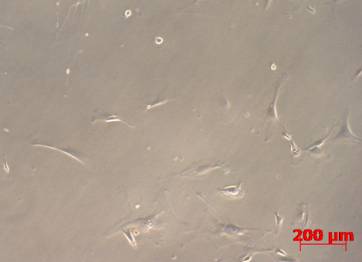Gustavo Satoru Kajitani
From DNA Repair Lab
| Revision as of 20:18, 11 August 2011 Satoru (Talk | contribs) ← Previous diff |
Revision as of 13:46, 25 November 2011 Satoru (Talk | contribs) Next diff → |
||
| Line 1: | Line 1: | ||
| + | http://www.icb.usp.br/%7Emutagene/images/4/40/Satorufoto1.jpg | ||
| Undergraduate student of Biological Sciences at University of Sao Paulo (USP), coursing the third year. Is currently developing a scientific initiation project under the co-orientation of Carolina Quayle (currently developing her PhD),with the finantial support of FAPESP. | Undergraduate student of Biological Sciences at University of Sao Paulo (USP), coursing the third year. Is currently developing a scientific initiation project under the co-orientation of Carolina Quayle (currently developing her PhD),with the finantial support of FAPESP. | ||
| Line 6: | Line 7: | ||
| The main DNA lesions caused by Ultraviolet (UV) light are the ciclobutane pyrimidine dimers (CPDs) and the pyrimidine (6-4) pyrimidone photoproducts (6-4PP). These lesions may be repaired by different DNA repair pathways. Many species contain genes that encode for photolyases, enzymes that use photons as their energy source in order to specifically repair each of those lesions. However, some groups do not posses the genes that encode for those proteins, such as placental mammals; Therefore, those groups are dependant of other repair pathways, such as the Nucleotide Excision Repair (NER) pathway in order to repair those photolesions. We intend to stablish cell cultures from from transgenic mice deficient in different NER-related proteins that express constitutively either CPD-photolyase or 6-4PP-photolyase, so that we can observe the specific effect of each type of lesion ''in vitro'' after the cells are irradiated with UV light. | The main DNA lesions caused by Ultraviolet (UV) light are the ciclobutane pyrimidine dimers (CPDs) and the pyrimidine (6-4) pyrimidone photoproducts (6-4PP). These lesions may be repaired by different DNA repair pathways. Many species contain genes that encode for photolyases, enzymes that use photons as their energy source in order to specifically repair each of those lesions. However, some groups do not posses the genes that encode for those proteins, such as placental mammals; Therefore, those groups are dependant of other repair pathways, such as the Nucleotide Excision Repair (NER) pathway in order to repair those photolesions. We intend to stablish cell cultures from from transgenic mice deficient in different NER-related proteins that express constitutively either CPD-photolyase or 6-4PP-photolyase, so that we can observe the specific effect of each type of lesion ''in vitro'' after the cells are irradiated with UV light. | ||
| + | |||
| + | |||
| + | http://www.icb.usp.br/%7Emutagene/images/2/2a/Queratinocitosatoru.jpg | ||
| + | |||
| + | Keratinocyte cell culture | ||
| + | |||
| + | http://www.icb.usp.br/%7Emutagene/images/f/fe/Fibroblastosatoru.jpg | ||
| + | |||
| + | Fibroblast cell culture | ||
Revision as of 13:46, 25 November 2011
 Undergraduate student of Biological Sciences at University of Sao Paulo (USP), coursing the third year. Is currently developing a scientific initiation project under the co-orientation of Carolina Quayle (currently developing her PhD),with the finantial support of FAPESP.
Undergraduate student of Biological Sciences at University of Sao Paulo (USP), coursing the third year. Is currently developing a scientific initiation project under the co-orientation of Carolina Quayle (currently developing her PhD),with the finantial support of FAPESP.
Research Abstract
The main DNA lesions caused by Ultraviolet (UV) light are the ciclobutane pyrimidine dimers (CPDs) and the pyrimidine (6-4) pyrimidone photoproducts (6-4PP). These lesions may be repaired by different DNA repair pathways. Many species contain genes that encode for photolyases, enzymes that use photons as their energy source in order to specifically repair each of those lesions. However, some groups do not posses the genes that encode for those proteins, such as placental mammals; Therefore, those groups are dependant of other repair pathways, such as the Nucleotide Excision Repair (NER) pathway in order to repair those photolesions. We intend to stablish cell cultures from from transgenic mice deficient in different NER-related proteins that express constitutively either CPD-photolyase or 6-4PP-photolyase, so that we can observe the specific effect of each type of lesion in vitro after the cells are irradiated with UV light.

Keratinocyte cell culture

Fibroblast cell culture